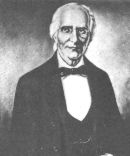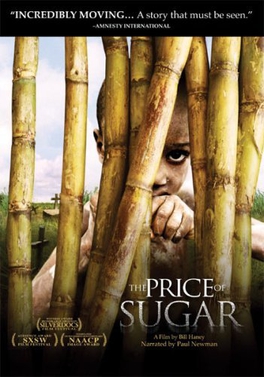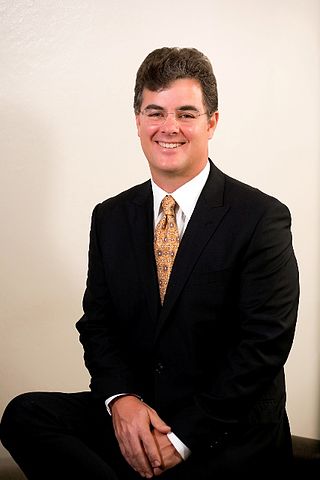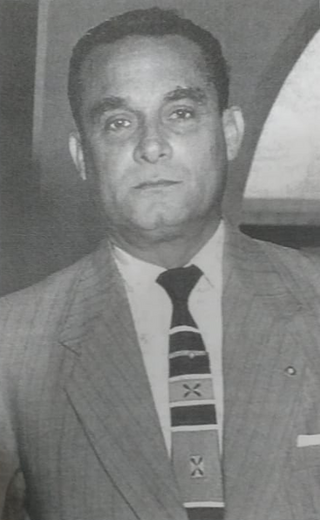Related Research Articles

The recorded history of the Dominican Republic began in 1492 when the Genoa-born navigator Christopher Columbus, working for the Crown of Castile, happened upon a large island in the region of the western Atlantic Ocean that later came to be known as the Caribbean. It was inhabited by the Taíno, an Arawakan people, who called the eastern part of the island Quisqueya (Kiskeya), meaning "mother of all lands." Columbus promptly claimed the island for the Spanish Crown, naming it La Isla Española, later Latinized to Hispaniola. After 25 years of Spanish occupation, the Taíno population in the Spanish-dominated parts of the island drastically decreased through genocide. With fewer than 50,000 remaining, the survivors intermixed with Spaniards, Africans, and others, forming the present-day tripartite Dominican population. What would become the Dominican Republic was the Spanish Captaincy General of Santo Domingo until 1821, except for a time as a French colony from 1795 to 1809. It was then part of a unified Hispaniola with Haiti from 1822 until 1844. In 1844, Dominican independence was proclaimed and the republic, which was often known as Santo Domingo until the early 20th century, maintained its independence except for a short Spanish occupation from 1861 to 1865 and occupation by the United States from 1916 to 1924.

Rafael Leónidas Trujillo Molina, nicknamed El Jefe ), was a Dominican military commander and dictator who ruled the Dominican Republic from August 1930 until his assassination in May 1961. He served as president from 1930 to 1938 and again from 1942 to 1952, ruling for the rest of his life as an unelected military strongman under figurehead presidents. His rule of 31 years, known to Dominicans as the Trujillo Era, was one of the longest for a non-royal leader in the world, and centered around a personality cult of the ruling family. It was also one of the most brutal; Trujillo's security forces, including the infamous SIM, were responsible for perhaps as many as 50,000 murders. These included between 12,000 and 30,000 Haitians in the infamous Parsley massacre in 1937, which continues to affect Dominican-Haitian relations to this day.

The Feast of the Goat is a novel by the Peruvian Nobel Prize in Literature laureate Mario Vargas Llosa. The book is set in the Dominican Republic and portrays the assassination of Dominican dictator Rafael Trujillo, and its aftermath, from two distinct standpoints a generation apart: during and immediately after the assassination itself, in May 1961; and thirty-five years later, in 1996. Throughout, there is also extensive reflection on the heyday of the dictatorship, in the 1950s, and its significance for the island and its inhabitants.

Juan Bautista Vicini Burgos was a Dominican political figure. He served as provisional president of the Dominican Republic between 1922 and 1924 during the U.S. military occupation.

Ramón Buenaventura Báez Méndez, was a Dominican conservative politician and military figure. He was president of the Dominican Republic for five nonconsecutive terms. His rule was characterized by being corrupt and governing for the benefit of his personal fortune.

Boca Chica is a municipality (municipio) of the Santo Domingo province in the Dominican Republic. Within the municipality there is one municipal district : La Caleta. As of the 2012 census it had 123,510 inhabitants, 70,184 living in the city itself and 53,326 in its rural districts (Secciones).

Nizao is a city in the province of Peravia in the Dominican Republic.

Ulises Francisco Espaillat Quiñones was a 19th-century Dominican liberal politician and author. He served as president of the Dominican Republic from April 29, 1876, to October 5, 1876. Espaillat Province is named after him.

The Price of Sugar is a 2007 Uncommon Productions film directed by Bill Haney and produced by Haney and Eric Grunebaum about exploitation of Haitian immigrants in the Dominican Republic involved with production of sugar, and the efforts of Spanish priest Father Christopher Hartley to ameliorate their situation. It is narrated by actor Paul Newman. The documentary shows the poor working conditions in the sugar cane plantations, and political control exerted by the Vicini family to stifle efforts to change the situation.
Christopher Hartley is a British-Spanish Catholic missionary priest who worked from 1997 to 2006 to improve the working and living conditions of the Haitian sugar cane workers in San José de los Llanos in the province of San Pedro de Macorís, Dominican Republic. His work there was the subject of the documentary film The Price of Sugar (2007), produced and directed by Bill Haney.

Amadeo Barletta Barletta was born in Italy in 1894 and died in the Dominican Republic in 1975. He was a successful Italian entrepreneur who migrated to the Caribbean in the early years of the 20th century and made significant contributions to the modernization of transportation and the media in the Dominican Republic and Cuba. Barletta's unusual business acumen and character allowed him to overcome major adversities. A hurricane destroyed his properties in the Dominican Republic in 1930. Trujillo confiscated them in 1935. Batista seized his businesses in 1941. Fidel Castro expropriated them in 1960.

The National Pantheon was built from 1714 to 1746 by the Spaniard Geronimo Quezada y Garçon and was originally a Jesuit church. The structure was constructed in the neoclassic-renaissance style. Today, the structure stands as a national symbol of the Dominican Republic and serves as the final resting place of the Republic's most honored citizens.
José María Cabral González is a Dominican film director, screenwriter, and producer. He is considered one of the most important directors of the Dominican Republic. He has directed seven feature films. Cabral Gonzalez is recognized as the first Dominican filmmaker to be selected by the Sundance Film Festival with his movie ¨Woodpeckers¨.

Manuel Vicente Díez Cabral is a Dominican businessman and entrepreneurial leader.
Viriato Alberto Fiallo Rodríguez was a Dominican physician and politician.
Juan Bautista 'Gianni' Vicini Cabral was an Italian-born Dominican businessman and chairman of the sugar company Grupo Vicini, the largest Dominican Republic corporation.

José Francisco Tapia Brea was a Dominican writer, historian, lawyer, jurist, ambassador and anti-Trujillo fighter. He was part of “group X” led by Ángel Severo Cabral, whose purpose was to eliminate the dictatorship of Rafael Trujillo and take the pertinent measures that would guarantee a democratic process in the country after the execution of the tyrant.
Juan Bautista is Spanish for John the Baptist. It is a Spanish given name. It may refer to:

Italian Dominicans are Dominican-born citizens who are fully or partially of Italian descent, whose ancestors were Italians who emigrated to the Dominican Republic during the Italian diaspora, or Italian-born people in the Dominican Republic. The Italian community in the Dominican Republic, considering both people of Italian ancestry and Italian birth, is the largest in the Caribbean region.
References
- ↑ Forbes Staff (April 21, 2015). "Los empresarios más ricos de República Dominicana". Forbes México.
- ↑ Tolan, Sandy; Cordero Nuel, Euclides (September 17, 2021). "The High Human Cost of America's Sugar Habit". Mother Jones .
By the end of the year, Hartley had partnered with Dominican human rights lawyer Noemí Méndez, who was born in a batey. Together they toured camps controlled by the powerful Vicini family, where his Haitian parishioners worked, and talked to cañeros about their rights and distributed copies of the Dominican Constitution. They both began to get death threats; Hartley says he would receive them until they drove him from the country in 2006.
- ↑ "Instituto Dominicano de Genealogía, Inc. - Victor Arthur". www.idg.org.do.
- ↑ Amadeo Barletta Barletta
- ↑ "Archivo General de la Nación". Archived from the original on April 11, 2009.
- ↑ "Complaint filed in the United States District Court for the District of Massachusetts". Scribd. August 31, 2007. Retrieved May 1, 2009.
- 1 2 "Family Accuses 'Sugar' Filmmakers of Defamation". NPR. October 3, 2007. Retrieved May 1, 2009.
- ↑ "APPEAL FROM THE UNITED STATES DISTRICT COURT FOR THE DISTRICT OF MASSACHUSETTS". FELIPE VICINI LLUBERES AND JUAN VICINI LLUBERES, Plaintiffs-Appellants, v. UNCOMMON PRODUCTIONS, LLC, ET AL., Defendants-Appellees. United States Court of Appeals For the First Circuit. November 23, 2011. Archived from the original on December 9, 2011. Retrieved January 8, 2012.
- ↑ "1st Circuit revives defamation suit against sugar documentary". Legal News. Thomson Reuters News & Insight. December 2, 2011.
- Ferran, Fernando. The legacy of Jose Maria Vicini Cabral, Santo Domingo, Dominican Republic, 2007.